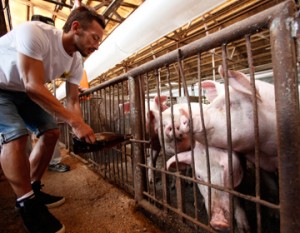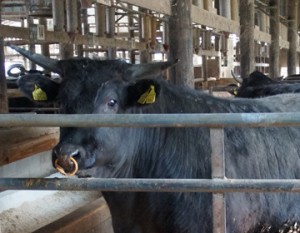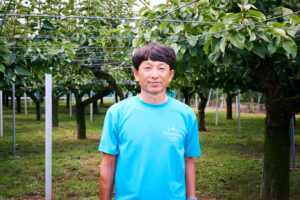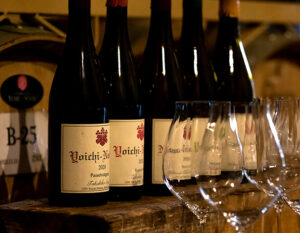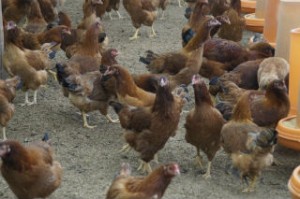Farmer with 120 years of history grows new vegetables
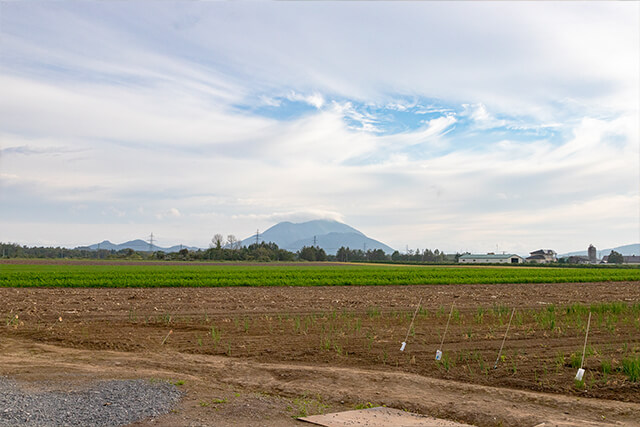
Makari Village in Hokkaido is located at the southern foot of Mt. Yotei , ” and surrounded by the mountains of the Niseko mountain range, the village is blessed with natural conditions such as temperature differences between day and night, fertile volcanic soil, and the mineral-rich subsoil water of Mt. Specialty products include lily bulb, the largest producer in Japan, potatoes, carrots, onions, sweet corn, and asparagus. In this village, where almost all of Hokkaido’s agricultural crops are harvested, there is only one person who grows completely different vegetables. He is Mr. Shinji Mino, the fifth generation owner of Mino Farm, which has been in existence for about 120 years.
Western vegetables indispensable for French and Italian food
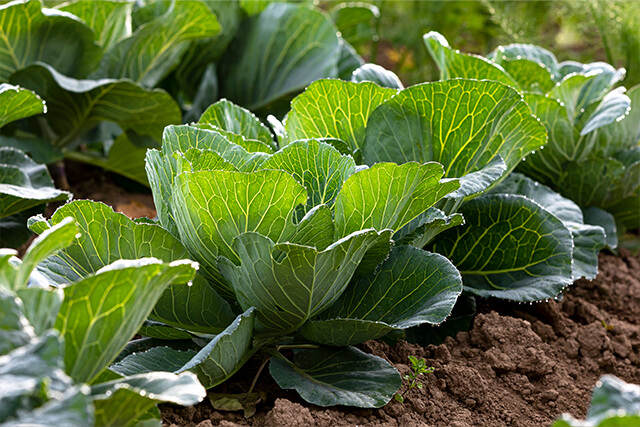
Mino Farm grows about 30 varieties of Western vegetables, including leeks, Belgian shallots, pecoros, Savoy cabbage, romanesco, fennel, and other unfamiliar varieties, colorful beets and carrots, and purple cauliflower. All of these vegetables are rare and rarely seen in supermarkets.
Leeks, also called “poirot,” look thicker than Japanese leeks. The more it is stewed, the sweeter it becomes, making it an indispensable ingredient in French cuisine. Unlike Japanese cabbage, savoy cabbage, which Mr. Mino says is his “favorite,” is mainly used for cooking. Because it is chewy and soaks up the broth, she uses Savoy cabbage instead of Chinese cabbage in nabe dishes at her home.
It all started with a suggestion from the chef at the Maccarina Auberge.
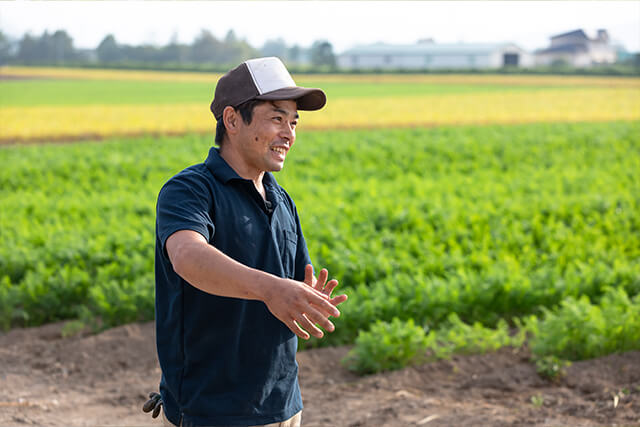
Why did he start growing Western vegetables instead of local specialties? It all started in 1997, when the Auberge “Maccarina ” was established in Makari Village.
When my father’s generation was still in the village, the chef at the Maccarina asked the village office if he could try growing Western vegetables for use in French cuisine, as he wanted to use local ingredients instead of imported ones,” recalls Mr. Mino.
They were brave enough to start, but it didn’t go well, and most of the farmers quit. Only Mino Farm persevered, and after five to six years, the harvest finally began to stabilize. At that time, they were also growing other crops such as potatoes and carrots, which they had grown in the past, and shipping them to the agricultural cooperative.
It was not until 14 to 15 years ago, when Mr. Mino took over the farm, that he began to seriously deal with Western vegetables. Thinking that if he could grow leeks, he could grow other Western vegetables, he began to expand his lineup. However, it is no mean feat to produce vegetables that none of the surrounding farmers produce. While learning cultivation methods on his own, he planted vegetables that he thought could be grown in Makari’s climate.
The first and second years after planting,” he said, “they always failed. Then the next year, I would try shifting the planting season, or dividing one crop into several fields and planting at different times of the year. Through repeated trial and error, we finally arrived at a method that allowed us to harvest vegetables in a stable manner.
Turning the Rudder to Growing Vegetables for Restaurants
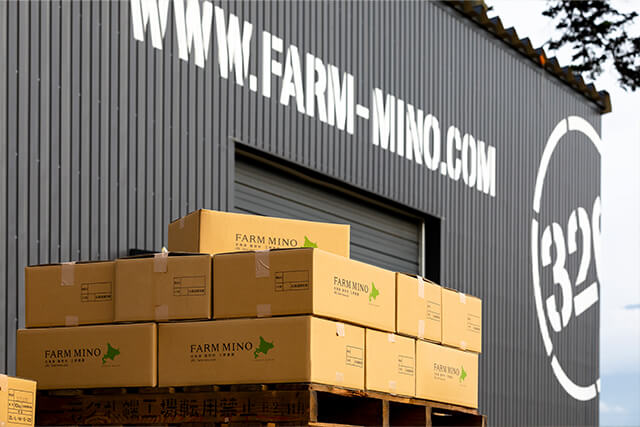
Mr. Mino had his reasons for insisting on growing Western vegetables. One reason is the high level of consumer interest. Every time he opened a booth at a produce market or event, he attracted a lot of attention and media coverage increased rapidly. Another reason is the challenge of farming that is not affected by fluctuations in market prices. While conventional farming with agricultural cooperatives requires less labor because large quantities can be harvested and shipped at once, it also makes it difficult to earn an income when market prices fall. Therefore, Mr. Mino narrowed down his target to restaurants and decided to sell directly at a certain price.
We priced our products manually by researching wholesalers and gathering information,” he said. Shipping from Hokkaido inevitably increases the cost of shipping, so we had to take that into consideration as well. But it is very rewarding to have people who want to buy the vegetables I price myself buy them.”
Direct transactions with “Maccarina,” the company that inspired him to produce Western vegetables, have also begun, and Mino Farm’s reputation has spread throughout Japan by word of mouth. Today, dishes using vegetables from Mino Farm are served at famous restaurants throughout Japan, including the long-established French restaurant “Tokyo Court d’Or” andthe Kyoto ryotei “Kikunoi”.
Because of the direct connection with the chef
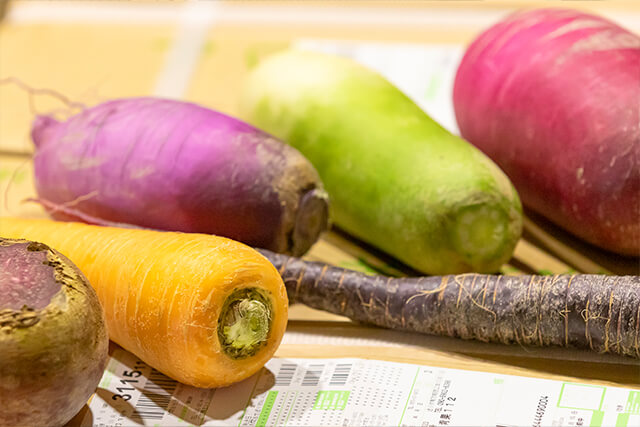
With the increase in the number of restaurants he does business with and the number of items he grows, Mr. Mino’s vegetable production has become increasingly difficult. He had to carefully calculate which vegetables to plant, how much to plant, and how much to harvest.
We have to make sure that we have a stable supply of vegetables during the time they are used on the restaurant menu. We don’t want to have a situation where we run out of vegetables even though we have gone to the trouble of putting them on the menu. But inevitably, there are times when we can harvest a lot, and other times when the harvest is reduced. Only when the harvest is low do we get a rush of orders. That balance is the most difficult thing to achieve.
Cultivating fields to prevent “out of stock” on restaurant menus
In order to prevent continuous cropping (poor growth of the same crop in the same field), the farmers rotate the planting locations by introducing leafy greens after root vegetables, which grow in the soil. If the fields are forced to work too hard, the quality and yield of the vegetables will surely decline. In order to harvest the required amount of produce in a limited area, Mr. Mino also makes sure to prepare the soil using natural organic materials, microorganisms, and compost.
The chef’s words give him hints and energy for vegetable growing.

Even after the harvest is complete, the work at Mino Farm is far from over. The entire staff is working at full capacity, taking orders, sorting, packing, and shipping. He started direct sales of western vegetables to secure an income from farming, but now, more than anything, he feels a strong desire to live up to the trust and expectations of his customers, which he says is very rewarding. He actively communicates with chefs, asking them how the vegetables are doing and what they want.
The farmers around me say, ‘It looks like a lot of work. We have to harvest while being pressed for orders, and we have to ship in time. I think it is difficult if you look at it from the perspective of conventional farming. But I decided to do this.
Mr. Mino’s tone of voice is calm, but his words convey a strong sense of determination and conviction.
I want to increase the number of products that can only be made here.

The reason we have been able to continue farming here since our ancestors settled this land 120 years ago is because it is a good place to grow vegetables,” says Mr. Mino.
As evidence of this, while many farming communities are facing a shortage of successors, in Makari there are relatively many people who have succeeded their parents as farmers, and there is no farmland available at all in the village. According to Mr. Mino, “When farmland becomes available, everyone wants it.
You can continue to farm the land you inherited from your parents, or you can take on a new challenge like Mr. Mino. The efforts of Mr. Mino’s farm, which has opened up a new market for western vegetables for restaurants, reminds us that agriculture is full of possibilities.
Mr. Mino’s new goal is to increase the amount of local produce in the area.
If we grow crops that are only available here, there is great potential to increase our income,” he says. It would be interesting if our company becomes a catalyst for more and more farmers to want to grow Western vegetables in this area, and if Makari Village’s specialty products increase.
In the not-too-distant future, Makari Village may be the site of many new specialty products.




